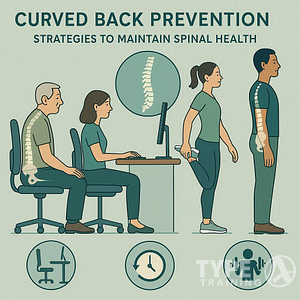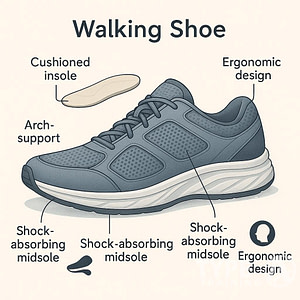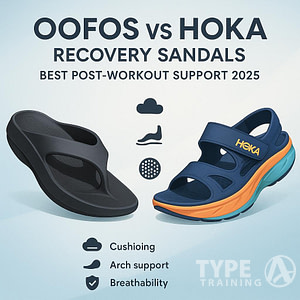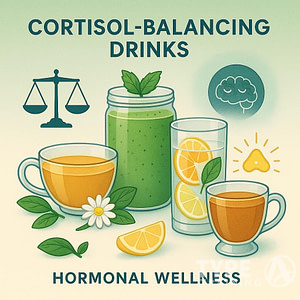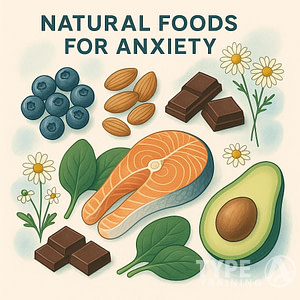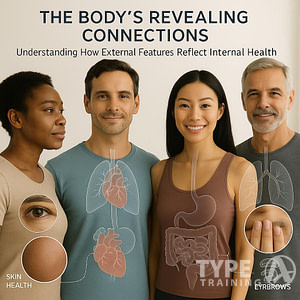Starting a keto diet can be a transformational journey, yet it is easy to slip into common pitfalls.
One of the most critical mistakes you might make is not eating enough fat. The keto diet isn’t just about cutting carbs; it’s also about ensuring that 75% of your calories come from healthy fats.
This balance is essential to keep your body in ketosis and help you achieve the desired results.
Popular posts:
Another significant error is neglecting to track your macronutrient intake.
The success of the keto diet hinges not only on reducing carbohydrates but also on the precise balance of fat, protein, and carbs.
Without monitoring these ratios, you may unintentionally disrupt ketosis and stall your progress.
Failing to consult with a healthcare professional before starting the keto diet is also a common and sometimes dangerous oversight.
It’s crucial to get professional advice to make sure this diet aligns with your individual health needs and conditions.
For more details on the top mistakes to avoid, check out this article on 10 Common Keto Mistakes.
Understanding Ketosis and Keto Diet Fundamentals
The keto diet focuses on reducing carbohydrate intake and increasing fat consumption to shift your body into a state called ketosis. This change in diet impacts your energy metabolism and has several health benefits.
Defining Ketosis and the Ketogenic Diet
Ketosis occurs when your body starts using fat as its primary energy source instead of carbohydrates.
On a ketogenic diet, you drastically cut down on carbs, usually to less than 50 grams per day, and increase fat intake.
This reduction in carbs leads to fewer glucose molecules available for energy. As a result, your liver converts fats into ketones, which become the main energy fuel.
In this metabolic state, your body burns fat more efficiently, aiding in weight loss and fat loss.
The keto diet typically consists of 70-75% fat, 20-25% protein, and 5-10% carbohydrates, which helps maintain ketosis.
By keeping carbohydrates low and fats high, your body stays in this fat-burning mode.
Balancing Macros for Ketosis
Achieving and maintaining ketosis requires careful balancing of macronutrients (macros).
Your diet should emphasize healthy fats like avocados, nuts, seeds, and oils.
Protein sources should be moderate and come from meat, fish, and eggs.
To meet your carbohydrate limit, focus on non-starchy vegetables such as leafy greens, broccoli, and cauliflower.
This ensures you get enough fiber and micronutrients without exceeding your carb limit.
Monitoring your macros ensures you stay within the proper calorie range, supporting sustainable energy levels and effective weight loss.
Using tools like food diaries and macro calculators can help you keep track of your intake and adjust as needed to maintain ketosis.
Health Benefits of a Keto Diet
The keto diet offers several health benefits beyond weight loss.
By reducing carb intake, the diet helps regulate blood sugar levels, making it beneficial for managing diabetes.
It also enhances mental clarity and provides more stable energy throughout the day due to the slow, consistent release of energy from fats.
Additionally, ketosis has been shown to help improve metabolic health by reducing the risk factors associated with conditions like metabolic syndrome.
The high fat content in the diet can also promote satiety, reducing overall calorie intake and helping in effective fat loss.
Common Dietary Mistakes and Nutritional Deficiencies
Maintaining balance in your diet is crucial on a keto plan. Important factors include managing electrolytes, ensuring appropriate fat intake, and focusing on nutrient-rich foods to avoid deficiencies.
Failing to Balance Electrolytes
Electrolyte balance is critical on a keto diet.
Low-carb diets can cause your body to excrete electrolytes such as magnesium, potassium, and sodium at a faster rate.
Symptoms:
- Muscle cramps
- Fatigue
- Headaches
To counteract these deficiencies, incorporate foods high in these minerals.
For example, leafy greens are rich in potassium, while nuts and seeds can boost your magnesium levels.
Ensuring proper hydration can also help maintain electrolyte balance.
Overconsuming or Underconsuming Fats
Proper fat intake is essential on a keto diet.
Consuming too little fat can make the diet less effective, while overconsumption can lead to unwanted weight gain.
Optimal Fat Intake:
- 75% of daily calories should come from fat.
- Focus on healthy fats like avocados and olive oil.
Fat is not only a major energy source but also aids in the absorption of fat-soluble vitamins like A, D, E, and K.
Mismanaging your fat intake can result in lower energy levels and potential deficiencies.
Ignoring Food Quality and Micronutrients
It’s easy to overlook the quality of food choices on a keto diet.
Processed foods can lack essential nutrients, contributing to deficiencies in vitamins and minerals.
Key Micronutrients:
- Vitamins: Focus on vitamins B, C, D
- Minerals: Magnesium, zinc, iron
Include a variety of nutrient-dense foods such as leafy vegetables, nuts, and seeds.
These not only offer vital micronutrients but also add necessary fiber to your diet.
Hydration and Keto Flu Management
Proper hydration is crucial when following a ketogenic diet to avoid the onset of keto flu and manage its symptoms effectively.
Ensuring you intake enough water and essential electrolytes can maintain your energy levels and overall well-being.
Understanding the Importance of Water Intake
Staying hydrated is essential on the keto diet to counteract the diuretic effect of low carb intake.
As your carbohydrate consumption decreases, your body’s insulin levels drop, causing your kidneys to excrete more water and electrolytes.
Drinking enough water helps prevent dehydration and supports metabolic processes. Aim for at least 8-10 glasses of water a day.
Include beverages like herbal teas and bone broth for variety and added nutrients.
These fluids can help replenish lost minerals and maintain electrolyte balance, critical for reducing the risk of flu-like symptoms, such as headaches and weakness.
Recognizing Symptoms and Coping with Keto Flu
The keto flu refers to flu-like symptoms that occur as your body adapts to using fat instead of carbs for fuel.
Symptoms often include headaches, fatigue, and muscle cramps.
To manage these symptoms, focus on replenishing electrolytes.
Incorporate foods rich in sodium, potassium, and magnesium, such as avocados, nuts, and leafy greens.
You might experience these symptoms within the first few days of starting the keto diet.
Staying hydrated and ensuring your electrolyte intake can significantly alleviate discomfort and help you transition smoothly into ketosis.
Proper Meal Planning and Food Choices
Proper meal planning and strategic food choices are essential to successfully maintaining a ketogenic diet.
By selecting nutrient-dense foods, avoiding hidden carbs and processed foods, and ensuring a variety of meals, you can optimize your health and stay on track with your low-carb lifestyle.
Selecting Nutrient-Dense Low-Carb Foods
Choosing nutrient-dense foods ensures you get essential vitamins and minerals while adhering to a low-carb diet.
Focus on non-starchy vegetables like leafy greens, cauliflower, and broccoli, which are low in carbs but high in fiber and nutrients.
Incorporate healthy fats such as avocado, nuts, seeds, and butter.
For protein, opt for high-quality sources like chicken, fatty fish, and grass-fed beef. Cheese and other dairy products can also be included, but select full-fat options.
Mixed nuts and seeds can serve as nutritious snacks.
Prioritize whole foods over packaged items to avoid unnecessary additives.
Avoidance of Hidden Carbs and Processed Foods
Hidden carbs can disrupt your ketosis and are often found in processed foods.
Carefully read labels and beware of ingredients such as maltodextrin and sugar alcohols, which can add unexpected carbs.
Vegetable oils, sauces, and dressings often contain hidden sugars and carbs.
Stick to natural, whole ingredients. Processed foods generally lack the high nutritional value needed on a ketogenic diet.
Craft your meals around clean foods and avoid those with lengthy ingredient lists.
When in doubt, double-check the net carb content of packaged foods, even those marketed as “keto-friendly.”
Importance of Variety and Meal Prep
Variety in your diet prevents boredom and ensures you get a range of nutrients. Regularly rotate different meat types, vegetables, and fats. Incorporating diverse non-starchy vegetables, like zucchini, spinach, and Brussels sprouts, helps provide various vitamins and minerals.
Meal prep is crucial for maintaining your diet. Preparing meals in advance reduces the temptation for unhealthy snacking and ensures that your meals are balanced and aligned with keto principles.
Consider preparing large batches of foods like chicken, beef, or seafood, paired with a variety of low-carb vegetables. Store these meals for quick access, making it easier to adhere to your nutritional goals.
Adhering to a structured meal plan with a focus on food quality, variety, and proper preparation is key to a successful ketogenic diet.
Lifestyle Considerations and Keto Troubleshooting
To successfully manage a ketogenic lifestyle, it’s crucial to balance physical activity, handle cravings in various social contexts, and adjust your diet when weight loss plateaus occur.
Managing Physical Activity and Exercise
Incorporating exercise into your routine while on a keto diet can significantly impact your progress. Aim for a mix of aerobic activities and strength training.
When your body shifts to burning fat for fuel, you may experience a dip in performance due to depleted glycogen stores.
Ensure you engage in light to moderate activities at first, like walking or yoga, to minimize fatigue. Increase intensity gradually. This approach helps in maintaining muscle mass and optimizing energy levels.
Staying hydrated and consuming electrolytes can mitigate potential side effects like muscle cramps and sluggishness. Consistently monitoring your body’s response will help tailor the exercise to your needs.
Handling Cravings and Social Situations
Managing carb cravings and dealing with social situations where high-carb foods are prevalent can be challenging.
To handle cravings, keep keto-friendly snacks like nuts, cheese, or avocados handy. These are satiating and help stabilize blood sugar levels.
Planning ahead is key when attending social events. You can usually find or bring low-carb options like grilled meats or salads.
Politely declining high-carb foods and explaining your dietary choices briefly can also deter persistent offers. Drinking plenty of water can also help manage hunger and prevent overeating.
Keeping your goals in mind and being prepared can make social situations more manageable.
Adjusting Keto for Weight Loss Plateaus
Weight loss plateaus can occur due to various factors. If your progress stalls, consider reassessing your calorie intake.
Both consuming too many and too few calories can impact results. Use a macronutrient tracker to ensure you’re eating the correct proportions of fats, proteins, and carbs.
Experiment with intermittent fasting to boost metabolism.
Incorporate more non-starchy vegetables and lean proteins to support gluconeogenesis without spiking glucose levels.
Don’t forget the importance of sleep, as poor sleep can hinder weight loss by increasing stress hormones and appetite.
Staying patient and making minor adjustments can help overcome plateaus effectively.
Frequently Asked Questions about Common Mistakes on Keto
Understanding the common pitfalls of the ketogenic diet can help you navigate it more successfully. Below are frequently asked questions addressing key concerns about following a keto diet.
What are the indicators of mistakes while following a ketogenic diet?
Mistakes on a keto diet can often manifest through persistent fatigue, headaches, and difficulty maintaining ketosis. If you notice that you’re feeling excessively tired or are struggling to stay in ketosis, it could indicate that adjustments to your diet are needed.
How can consuming too many carbs affect keto progress for men and women?
Consuming too many carbs can kick you out of ketosis, disrupting the fat-burning process. This setback affects both men and women similarly, preventing your body from adapting to burning fat for fuel. It’s essential to monitor carb intake closely to maintain ketosis.
What are the potential consequences of inadequate water intake on a keto diet?
Not drinking enough water can lead to dehydration, as the keto diet tends to have a diuretic effect. Dehydration can cause headaches, dry mouth, and reduced physical performance. Ensuring you stay properly hydrated is crucial to avoid these issues.
Which types of salt are recommended when adhering to a ketogenic lifestyle?
When following a ketogenic lifestyle, it is recommended to use mineral-rich salts like sea salt or Himalayan pink salt. These salts provide essential electrolytes that may help prevent imbalances and support overall well-being.
What are the most common misconceptions about foods allowed in unlimited quantities on a keto diet?
A common misconception is that all high-fat foods can be consumed in unlimited quantities. While fats are a key component, not all fats are equal. Processed and unhealthy fats should still be limited to promote better health outcomes.
What foods should typically be avoided to maintain ketosis?
To maintain ketosis, avoid high-carb foods. These include bread, pasta, rice, and sweets. Starchy vegetables like potatoes and certain fruits that are high in sugar should be limited to keep your carb intake low.







